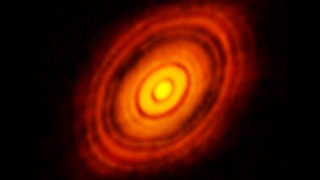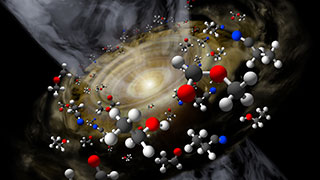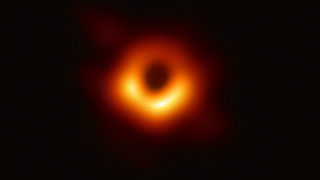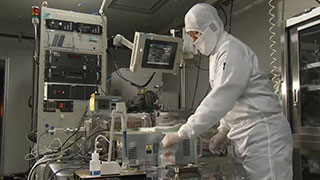ALMA Discoveries
 Credit: NAOJ
Credit: NAOJ
- TOP
- ALMA Discoveries
- Planet Formation
Planet Formation
How are planets born? ALMA has taken full advantage of its high resolution and sensitivity to tackle this unsolved mystery. Astronomers found a wide variety of dust and gas disks (protoplanetary disks) around young stars, in other words, the birthplaces of planets. Each image produced by ALMA is steadily advancing our understanding of the birth of planets.
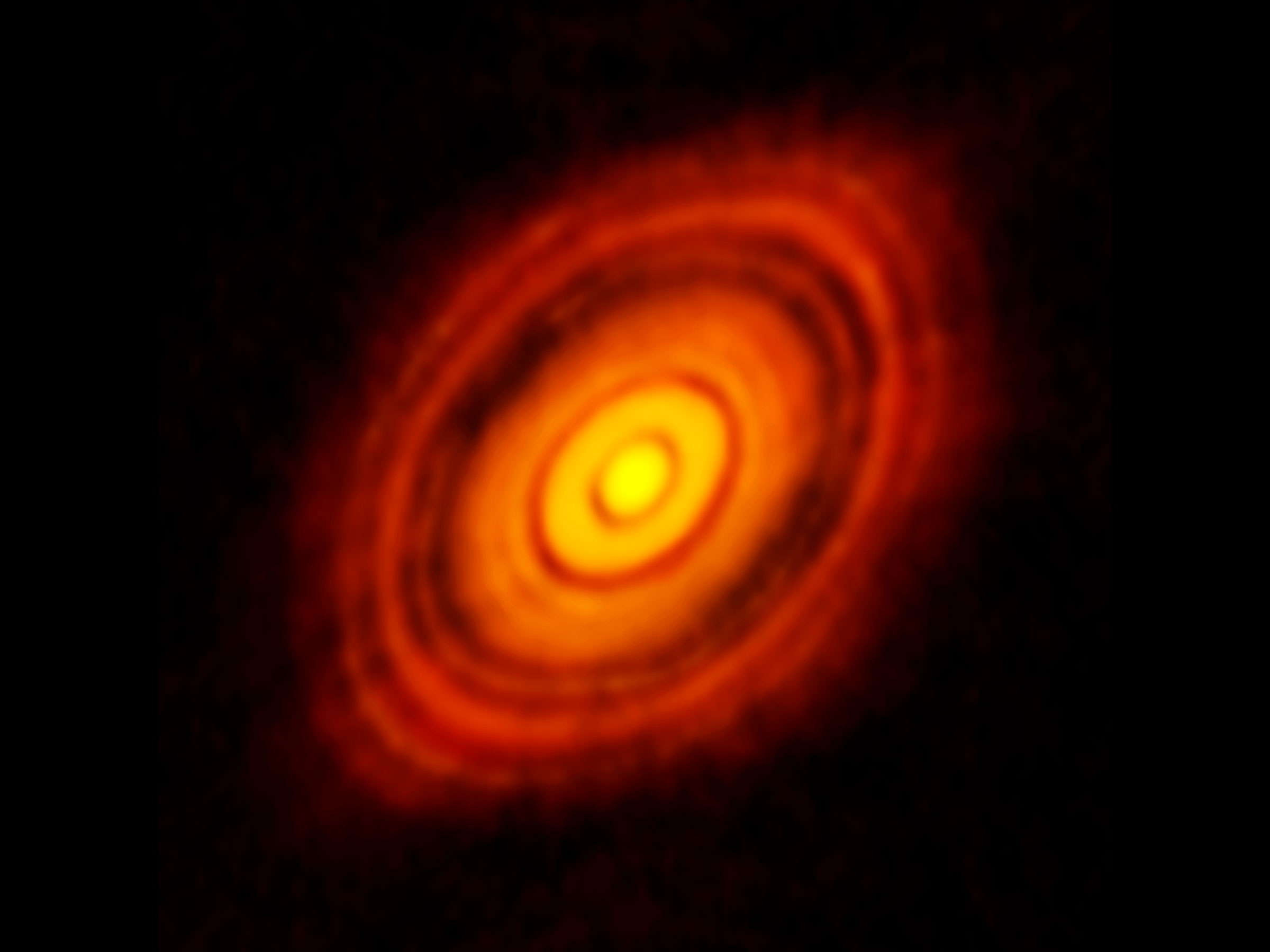 Credit: ALMA (ESO/NAOJ/NRAO)
Credit: ALMA (ESO/NAOJ/NRAO)
ALMA Revealed Planetary Genesis
A disk of dust surrounding the star HL Tauri was captured by ALMA. The astonishing details with multiple rings and gap structures continue to impress astronomers, but at the same time pose an interesting question that has not yet been solved: How was this structure formed? There are a number of possibilities. Some researchers suggested that planets had already formed inside the disk and the gaps were created by their gravity. Another proposed a theory that the rings were formed naturally by the disk's own gravity. And yet others suggested that the rings were created by differences in temperature inside the disk. This single image has greatly advanced the study of planet formation.
News article: "Revolutionary ALMA Image Reveals Planetary Genesis"
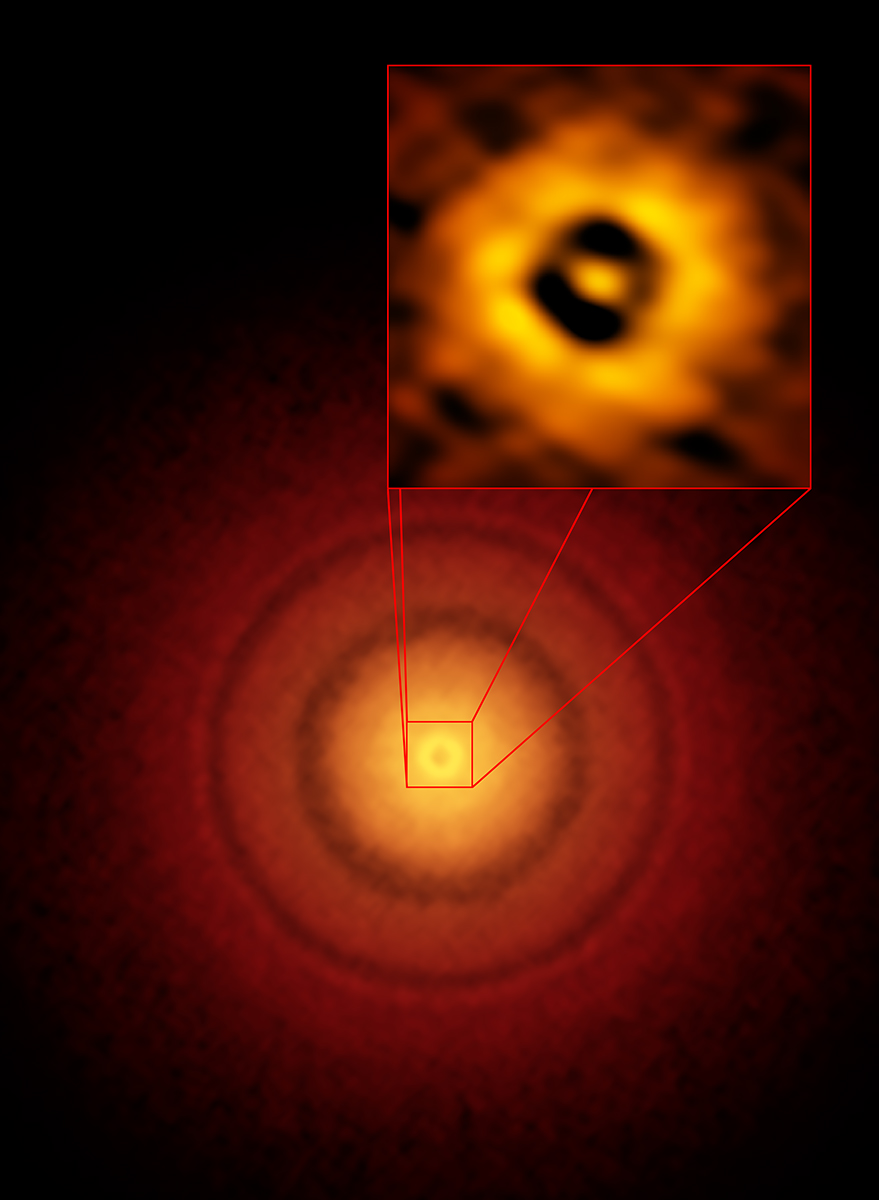 Credit: S. Andrews (Harvard-Smithsonian CfA), ALMA (ESO/NAOJ/NRAO)
Credit: S. Andrews (Harvard-Smithsonian CfA), ALMA (ESO/NAOJ/NRAO)
Planet Birth Site Close to a Star
Located approximately 200 light-years from the Earth, TW Hydrae is the closest site of planet formation. The immediate vicinity of the central star is difficult to observe with optical telescopes because of the extremely bright starlight, but radio telescopes are not affected by visible light and can properly capture the surrounding gas and dust around the central star. Observations with ALMA have revealed a gap structure near the center of the disk, located at about the same radius as the Earth's orbit. Whether this gap is caused by a formation of an Earth-like planet is unknown at the moment, but this demonstrates that ALMA is able to directly observe the site where a rocky planet could form.
News article: "Planet Formation in Earth-like Orbit around a Young Star"
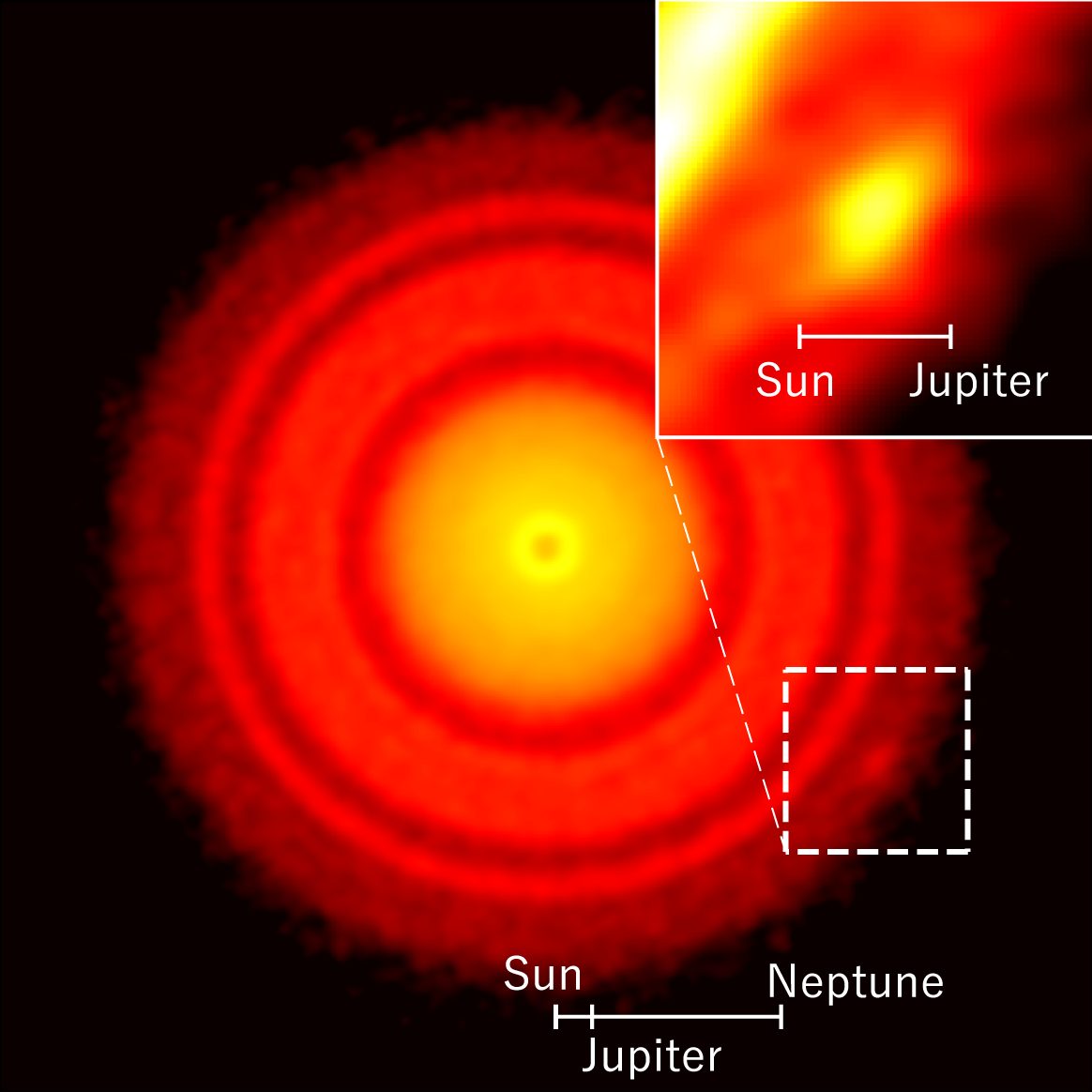 Credit: ALMA (ESO/NAOJ/NRAO), Tsukagoshi et al.
Credit: ALMA (ESO/NAOJ/NRAO), Tsukagoshi et al.
Pinpointed the Formation Site of a Planet
In the same disk of dust around the star TW Hydrae, ALMA has successfully pinpointed the exact birthplace of a planet. Observations with ALMA revealed a small radio source in the disk, which may indicate an existence of a Neptune-sized planet and a clump of dust surrounding the newly formed planet. The radio emission may arise from the region where dust has been collected by a gas vortex, and a planet is about to form. In either case, ALMA has captured an important scene in the planet formation process.
News article: ALMA Pinpoints the Formation Site of Planet around Nearest Young Star
 Credit: ALMA (ESO/NAOJ/NRAO), S. Andrews et al.; NRAO/AUI/NSF, S. Dagnello
Credit: ALMA (ESO/NAOJ/NRAO), S. Andrews et al.; NRAO/AUI/NSF, S. Dagnello
Twenty Different Planet-Forming Sites
In addition to studying each protoplanetary disk in detail, observing many disks to investigate their similarities and differences is also essential to understanding the environmental dependence for various kinds of planets to form. ALMA has observed many young stars and captured images of diverse planet-forming sites. How does the appearance of the disk change if the mass of the central star is different, or if the evolution stage is different? How long does it take for a planet to form? Observations with ALMA continue to reveal mysteries that are yet to be solved.
News article: The Epoch of Planet Formation, Times Twenty - ALMA Campaign Provides Unprecedented Views of the Birth of Planets
 Credit: ALMA (ESO/NAOJ/NRAO); A. Isella
Credit: ALMA (ESO/NAOJ/NRAO); A. Isella
Witnessing Formation of an Exomoon
ALMA captured this image of the protoplanetary disk around the young star PDS 70. Just inside the wide ring-shaped disk, to the right of the central star, a small radio source appears in the image. In fact, the existence of a planet at this location was already known previously. The radio source found by ALMA traces the disk of dust surrounding this planet (circumplanetary disk). As the dust coalesces and grows in this small disk, a satellite may be formed. ALMA has successfully captured the site of satellite formation around an exoplanet.
News article: “Moon Forming” Circumplanetary Disk Discovered around Young Planet in Distant Star System


